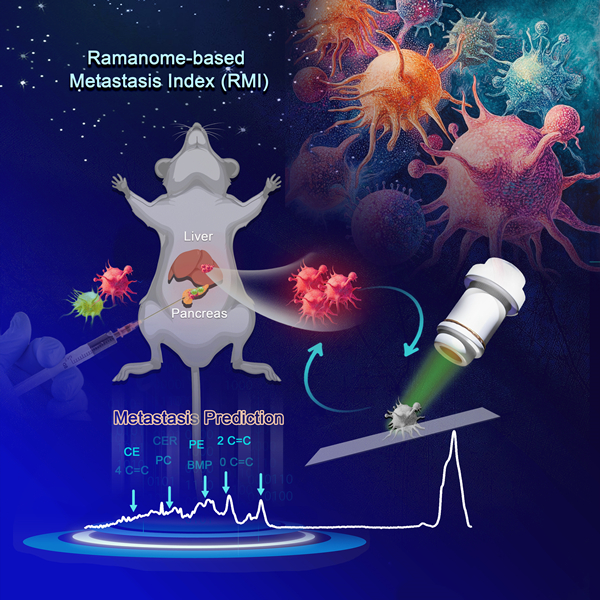Cancer metastasis, a leading cause of cancer-related deaths, involves a complex, multi-stage process. Traditional methods for assessing metastatic potential are often time-consuming and labor-intensive, with limited accessibility to samples.
Researchers from Qingdao University and Qingdao Institute of Bioenergy and Bioprocess Technology (QIBEBT) of the Chinese Academy of Sciences have developed a novel, rapid, and label-free method using Raman spectroscopy to assess tumor migration potential.
This study, published in Small Methods, introduces the Ramanome-based metastasis index (RMI), a metric that leverages machine learning techniques to analyze single-cell Raman spectra. This method allows for rapid and precise prediction of tumor cell metastatic potential without relying on traditional biomarkers.

RMI guided metastasis prediction based on single-cell Raman spectra (Image by LIU Yang)
The RMI underwent validation across multiple tumor cell lines and a mouse model of pancreatic ductal adenocarcinoma. The results showed a strong correlation with traditional methods such as Transwell assays and histopathological evaluations.
A key finding of this study was the pivotal role of lipid-related Raman peaks in determining the RMI. Lipidomic analysis revealed strong associations between metastatic potential and specific lipids, such as phosphatidylcholine, phosphatidylethanolamine, and cholesteryl ester. These findings highlight the critical role of lipid metabolism in cancer progression, presenting it as a potential therapeutic target.
“This study not only provides a tool for predicting tumor metastatic potential but also offers new insights into the mechanisms underlying metastasis,” said Prof. REN He from Qingdao University. “Understanding the link between metabolic changes and metastatic potential could guide the development of therapies targeting these metabolic pathways, leading to more effective cancer treatments.”
This study demonstrates how interdisciplinary methods—spanning spectroscopy, machine learning, and lipidomics—can change cancer diagnosis and treatment.